The views expressed in our content reflect individual perspectives and do not represent the authoritative views of the Baha'i Faith.
Though not well-documented in the histories of the more ancient religions, a precursor or herald often appeared prior to the advent of a divine manifestation to announce the coming of a new dispensation.
This individual was sometimes the first to recognize the new manifestation prior to the initial revelatory experience that inaugurates the new Faith, or else someone who assembles a following to teach them that the time for the advent of the next prophet is at hand.
Though the Bab is presently best known as the herald or forerunner of Baha’u’llah, Baha’is understand that he was also a manifestation of God in his own right:
Not only in the character of the revelation of Baha’u’llah, however stupendous be His claim, does the greatness of this Dispensation reside. For among the distinguishing features of His Faith ranks, as a further evidence of its uniqueness, the fundamental truth that in the person of its Forerunner, the Bab, every follower of Baha’u’llah recognizes not merely an inspired annunciator but a direct Manifestation of God. It is their firm belief that, no matter how short the duration of His Dispensation, and however brief the period of the operation of His laws … He was not merely the precursor of the Revelation of Baha’u’llah, that He was more than a divinely-inspired personage, that His was the station of an independent, self-sufficient Manifestation of God, is abundantly demonstrated by Himself, is affirmed in unmistakable terms by Baha’u’llah, and is finally attested by the Will and Testament of Abdu’l-Baha.
That definitive passage, from Shoghi Effendi’s book The World Order of Baha’u’llah, clearly defines the Babi revelation as co-equal with the religious dispensations of the past.
Consequently, a foreshadowing of the advent of the Bab took place, in the form of two prominent teachers who proclaimed that the time for the appearance of another manifestation had arrived.
The first of these figures was Shaykh Ahmad-i-Ahsa’i (1753–1826), and the second was his successor, Siyyid Kazim-i-Rashti (1793–1843), two learned Moslem mystics who heralded the Bab’s coming. Both of these individuals wrote and extensively taught that the time was at hand for the appearance of the promised Qa’im (“He who will arise”), sometimes alluded to as the Mahdi (the “Guided One”). According to Shí‘ih belief, the Qa’im would be a lineal descendant of Muhammad who would appear in the world to usher in an age of righteousness.
Among the students of Kazim-i-Rashti in Karbila during the year 1840 was a young man of twenty years of age, Siyyid Ali Muhammad Shirazi. On a pilgrimage to Karbila from his native city of Shiraz, Siyyid Ali-Muhammad – who would, four years later, assume the title “the Bab,” meaning “the Gate” – was at the time a young merchant working for his uncle in Bushihr, a costal town on the Persian Gulf. It is said that during these classes, Siyyid Kazim paid special attention to Siyyid Ali Muhammad, at one time alluding to him while discussing the imminent appearance of the Qa’im.
This was hardly the first time someone had noted the special status of the Bab. Like Christ and Muhammad, the childhood of the Bab is marked by instances in which his transcendent knowledge was apparent to fellow students and teachers alike. When Ali-Muhammad was nine years old, his father, Muhammad-Rida, died. His mother, Fatimih-Bagum, was assisted by her three brothers in raising him, with his uncle Haji Mirza Siyyid Ali playing the most critical role. One of the first indications of the boy’s superior intellect occurred, according to this account in H.M. Balyuzi’s biography The Bab, when he was sent by this same uncle to be instructed by Shaykh Abid:
When He was sent to school, He so surprised the schoolmaster, Shaykh Abid, with His wisdom and intelligence that the bewildered man took the child back to His uncle and said that he had nothing to teach this gifted pupil: ‘He, verily, stands in no need of teachers such as I.’
Nevertheless, at the insistence of his uncle, the Bab continued to study under Shaykh Abid. During this period many other examples of his inherent knowledge became evident. For example, Shaykh Abid began to observe that Ali-Muhammad cared little for ordinary childhood pastimes, but instead desired to concentrate on prayers and mediations. Consequently, when the boy began to come late to school, the teacher became concerned about why his best student was becoming negligent – so Shaykh Abid sent some of the Bab’s fellow students to the Bab’s home to ask him to come to school.
When the boy arrived and was asked why he had come late to school, the Bab answered that he had been in his grandfather’s house. Since the Bab had no living grandfather, the teacher knew that he was referring to the prophet Muhammad. The Bab was a Siyyid, a descendant of the prophet Muhammad, and sometimes Siyyids would refer to Muhammad as their “grandfather.” What was more, the teacher understood that being “in His Grandfather’s house” meant that the Bab had been praying, meditating, and communing with the soul of the prophet.
The Babi religion is considered to have begun on the evening of May 23, 1844, in Shiraz when Ali-Muhammad declared to an avid follower of Siyyid Kazim, named Mulla Husayn, that he – Siyyid Ali-Muhammad – was the Qa’im, and that his title was to be the Bab, because the purpose of his revelation would be to prepare the way for “Him Whom God will Manifest,” another manifestation or messenger who would transform the entirety of the world community.
The entrancing narration of that evening in the account by Mulla Husayn is a remarkable testimony to the power and influence of the Bab. Mulla Husayn was extremely learned and well-versed in the traditions and requirements that would qualify anyone laying claim to the station of Qa’im.
One of the confirmations Mulla Husayn sought was the fulfillment of a secret proof of his own devising – that the real Qa’im would, unasked, spontaneously reveal for him a commentary on the enigmatic Surih of Joseph from the Qur’an. After Mulla Husayn had satisfied himself that all other qualifications were evident in the personage of Ali-Muhammad, the Bab, unasked, began to reveal the first chapter of “that ‘first, greatest and mightiest’ of all books in the Babi Dispensation, the celebrated commentary on the Surih of Joseph.”
The Epiphany of the Bab
While that fateful evening marked a milestone in beginning the overt declaration of the Bab’s station and mission, this celebrated event did not mark the point at which the Bab himself had his own “epiphany” or awakening to the fact that the time for his own revelation had come. The event, comparable to Moses’ vision of the Burning Bush, Christ’s baptism in the Jordan, and Muhammad’s vision of the Angel Gabriel, occurred to the young prophet in a dream, as described in this authoritative account by Shoghi Effendi in God Passes By:
… in a dream He approached the bleeding head of the Imam Husayn, and, quaffing the blood that dripped from his lacerated throat, awoke to find Himself the chosen recipient of the outpouring grace of the Almighty.
The Bab’s own account of this awakening to the beginning of his ministry, included in Nabil’s history The Dawn-Breakers, is most moving. He experienced this dream-vision in 1843, a year before his declaration of his station to Mulla Husayn, and he penned a fairly detailed recollection of that experience:
The spirit of prayer which animates My soul is the direct consequence of a dream which I had in the year before the declaration of My Mission. In My vision I saw the head of the Imam Husayn, the Siyyidu’-sh-Shuhada’, which was hanging upon a tree. Drops of blood dripped profusely from His lacerated throat. With feelings of unsurpassed delight, I approached that tree and, stretching forth My hands, gathered a few drops of that sacred blood, and drank them devoutly. When I awoke, I felt that the Spirit of God had permeated and taken possession of My soul. My heart was thrilled with the joy of His Divine presence, and the mysteries of His Revelation were unfolded before My eyes in all their glory.
Similar in its symbolism to Christ’s request that his disciples partake of the wine as if it were his own blood, this dream obviously relates to the Bab’s heritage as a direct descendant of the Imam Husayn, the third Imam, as well as his inheritance of the mantle of the authority that, according to Shi‘ih belief, befell each of the twelve Imams.





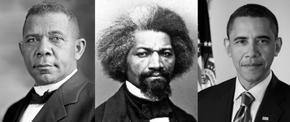
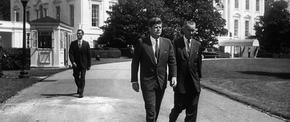



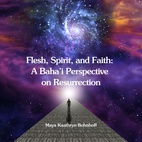

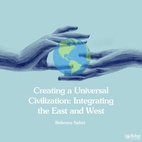

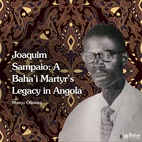

Comments
Sign in or create an account
Continue with Googleor